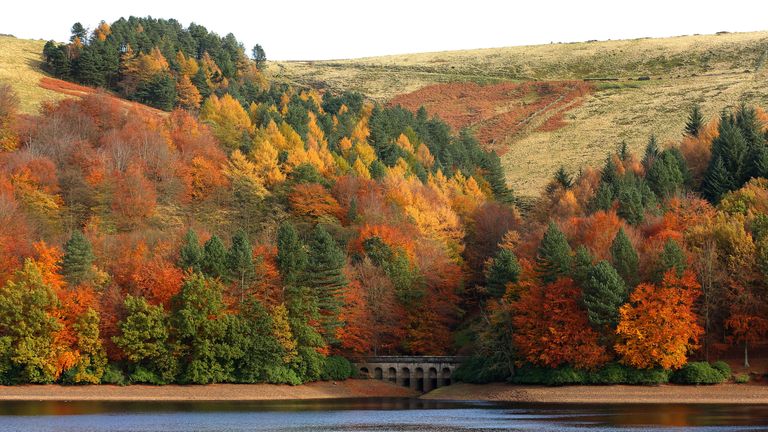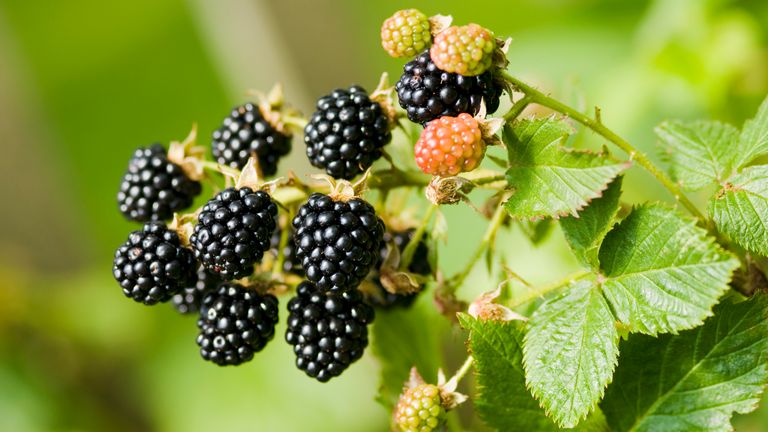The UK's hottest summer on record has triggered a "mast year", when trees and shrubs produce an unusually large number of fruits and nuts like acorns, conkers and berries.
But concerns about the hot and dry conditions creating a so-called "false autumn" have been allayed in some areas, according to the National Trust, after experiencing late rainfall.
The conservation charity has set out its prediction for a long, colourful autumn display in the coming weeks, while also warning of the ongoing challenge of climate change.
It says volatile weather patterns pose an increasing challenge for experts as they struggle to predict autumn conditions.
Please use Chrome browser for a more accessible video player
What is a 'mast year'?
Berries, acorns, and fungi are already abundant and are a welcome boost for wildlife. But this year the weather has encouraged certain plants to produce a bumper crop of fruits, nuts and berries (whose collective term is "mast").
The National Trust says the UK is experiencing a "mast year", which typically happens around once every four years.
This phenomenon involves trees and shrubs creating "more food than animals can possibly eat", according to the Woodland Trust, which adds that this guarantees some of the crop will be left over to survive and germinate.
Emily Chandler, head gardener at the National Trust's Dunham Massey in Cheshire, said the volume of acorns is "the largest we have ever seen".
Meanwhile, Claire McNally, head gardener at the Rowallane Garden in Northern Ireland, also said they are looking forward to their best berry season for at least five years.

'False autumn' averted
The National Trust said weather conditions have put the brakes on the start of a "false autumn" in some areas, when prolonged hot, dry conditions can cause plants to prematurely shed leaves and ripen fruits too early.
But showers in September have now put the season back on track, the charity said.
Steve Feazey, Sheffield Park's head gardener in East Sussex, said: "Our trees have had a good drink, and we are now hopeful that our autumn display will be as fiery and spectacular as ever."

Although Martyn Burkinshaw, gardens and outdoors manager at Petworth House in West Sussex, said some veteran trees had died "and others have already dropped their leaves for winter".
But he predicted that "the way the colours are presenting now I'd estimate the best time for autumn colour will be mid-late October."
Read more from Sky News:
Summer 2025 was warmest on record
Extreme weather 'becoming the norm'
Tree of the Year 2025 was wildcard entry

Big fruit harvest
In September, the National Trust reported a bumper crop of orchard fruit and pumpkins.
Rebecca Bevan, plant health and sustainability consultant, said that climate change had brought "some very challenging growing conditions over recent years" but "certainly fruit harvests are a success story for 2025".
"This year's apple and other tree fruit harvests - including much of the abundance in hedgerows - is likely due to the wet conditions last year... followed by a dry and sunny spring.
"Lots of sun over the summer was then ideal for ripening the fruit," she added.
But the dry weather has also had an impact on farmers, with the National Farmers Union (NFU) reporting in August that water shortages have impacted the growing season.
"Some farms are reporting a significant drop in yields, which is financially devastating for the farm business and could have impacts for the UK's overall harvest," NFU vice-president Rachel Hallos said.

 3 weeks ago
16
3 weeks ago
16





















 English (US) ·
English (US) ·